|
Saraswati Bhawan Private Pilgrimage
Wutai Mountain & Emei Mountain
May 13-27, 2016
MANJUSHRI is the Buddha of wisdom and Wutai Mountain is his sacred abode. SAMANTABHADRA
is the Buddha of Skillful means, and Emei Mountain is his sacred abode. Like the sun and moon these
two Buddhas and their holy mountains represent the two accumulations, and unite in the mandala of the
one taste awareness of wisdom mind. Together they represent the entirety of the Buddhas tri-yana
teachings. Through the ripening power and blessings of the gloroius Buddhas, and their descendants,
may all beings enjoy the Pureland.
WUTAI MOUNTAIN is the sacred abode of the Wisdom Buddha Manjushri and is one of the most
famous of the sacred mountains in the Far East. Conveniently located between Beijing, and
Inner Mongolia, in Shanxi Province, the five peaks of Wutai Mountain represent the Buddha's
crown, the five Buddha families, the five wisdoms, the five lights, the five elements, the five sense
organs, the five visceral organs, the five parts of the body, the five directions etc... with the
northern peak reaching over 10,000ft high. These peaks surround the monastic town of Taihuai, and the
Bodhisattva Peak, which represents the Brahman’s Aperture of the Buddha’s crown. Viewed from afar the
Wutai Mountain range looks like a sleeping Buddha where the sun and moon rises from his third eye.
There are also many extremely powerful caves on Wutai Mountain. There is the Vimilimitra Cave where the
great Nyingma master still roams, the Avolokitshvara Cave where the 6th Dalai Lama spent six years in meditation,
the cavernous Samantabhadra Cave, the Manjushri Cave where he subdued the nagas, and perhaps most powerful cave of
all is the Tara Mother Buddha Dakini Cave. Regardless of size not everyone can get into the inner chamber of the
Mother Buddha Dakini. To enter this cave you have to walk between her legs, and enter her yoni, which is a small
opening about the size of a meditation cushion. If you have the right karma you can crawl inside the womb of Mother
Buddha Dakini where you will recieve her blessing. Inside the cavern you can hear her mantra, and see all of her
internal organs in the natural rock formation. After returning from the womb of the Mother Buddha Dakini most
pilgrims feel reborn into the wisdom of sukkavati bliss.
|
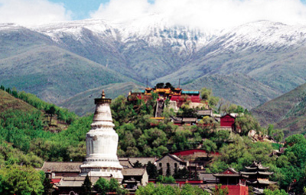 Bodhisattva Peak, and the Stupa of Shakyamuni.
Bodhisattva Peak, and the Stupa of Shakyamuni.
|
|
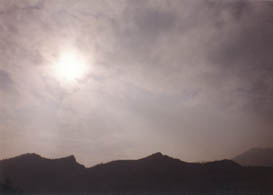 Sunrise from the third eye of the sleeping Buddha.
Sunrise from the third eye of the sleeping Buddha.
|
|
|
|
|
|
|
Wutai Mountain and the Wisdom Buddha Manjushri are the subject of countless Buddhist
scriptures, sutras, and tantras. Mahayana Buddhism began arriving on Wutai Mountain as
early as the first century Han Dynasty and temple building began as early as 25AD, which
continues to this day. By the fourth to sixth centuries there were over two hundred
monasteries, and during the Tang Dynasty 700AD, China's Chan Buddhism (Zen) became the most
prolific form of Buddhism in the Far East with Manjushri as its archtype. Chan Buddhist
temples sprouted forth like wild flowers on a warm Spring day illuminating innumerable sentient
beings into the vast expanse, and Wutai Mountain became a well spring, and cornerstone, of
Chan teachings, which are based on the prajnaparimita sutras, and the mind seal transmission
beyond scripture.
Also during the Tang Dynasty Vajrabodhi brought Vajrayana Buddhism to China, and in particular the
ancient King of Tibet Trisong Detsun, who was an emination of Manjushri, invited the inconceivable
Nirmanakaya Padmasambhava to Tibet and China, and Vajrayana Buddhism spread throughout the land.
Two other preceptors related to Padmasambhava have a strong presence on Wutai Mountain, his Dzogchen
teacher Shri Singha, and the abbot Vimilimitra who retired on Wutai Mountain, and is said to still
turn the wheel of the Great Perfection in his sambogakaya form. The Mongolians of the Yuan Dynasty
1100AD united all of Central Asia under its rule and established their capital in Beijing.
The Mongols subsequently disbanded the Nyingma monarchies of Tibet, established the reign of the
Gelug Dalai Lamas, and spread the Gelug teachings throughout the empire, especially on Wutai Mountain.
The Manchurians of the Qing Dynasty 1600AD were one of the great Vajrayana cultures that
ruled China based on Shakyamuni's Inconceivable Long Life Sutra for over three hundred
and sixty years. Several of their emperors, such as Kangxi and Qianglong, were reincarnations of Manjushri, and the
Manchurian people are also considered his emanations. Manchurian literally means,
the people of Manjushri. The Qing Dynasty created a field of merit from Beijing to Lhasa,
and Wutai Mountain was their main center of pilgrimage becoming a beacon of light for all
three vehicles of the Buddha Dharma. Since ancient times it has been quite common
for pilgrims to meet Manjushri in a variety of forms, and receive his blessings and teachings directly
from the Wisdom Buddha himself when making the pilgrimage to Wutai Mountain.
|
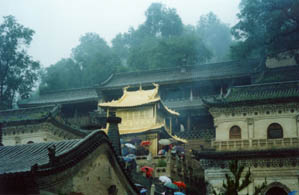 The bronze home of Manjushri at Xiantong Monastery
The bronze home of Manjushri at Xiantong Monastery
|
|
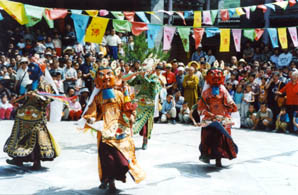 Festival at Manjushri Temple, a Mongolian Lamasery
Festival at Manjushri Temple, a Mongolian Lamasery
|
|
|
|
|
|
|
Today Chinese, Mongolian, and Tibetan monasteries cover the landscape of Wutai Mountain
and they all attend each other’s teachings and share with each other the great wealth
of their wisdom traditions. Besides the overwhelming amount of temples on Wutai Mountain
there are many great little magical spots every where you look. The main stupa of the
monastic city center is the largest and holds relics of the Buddha Shakyamuni. The
second largest stupa holds the relics of Majushri. There are many other stupas on Wutai
Mountain that houses the relics of great masters including the 7th Zhajiang Tulku, and
late great Dilgo Kyentse, who taught the Dharma to many people in the West. There is also
other types of sacred spots such as Reaching Buddhahood Wall, and the Bodhisattva Peak
where the Qing Dynasty Emperor's Kangxi and Qianlong lived, and Jigme Puntsog also
turned the wheel of the tantric mysteries. You can easily spend a life time exploring
the great wealth of the Buddha Dharma on Wutai Mountain, and with all of the monasteries
and nunneries blooming with so much Dharma like a crystal lotus on a sunny morning,
we encourage you to do so.
|
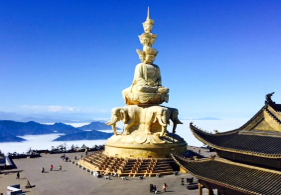 On the Golden Summit of Emei Mountain Samantabhadra gazes over the snow peaks
of the 24,000ft. Konga Mountains of Kham, Tibet.
On the Golden Summit of Emei Mountain Samantabhadra gazes over the snow peaks
of the 24,000ft. Konga Mountains of Kham, Tibet.
|
|
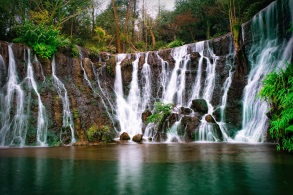 Lush waterfalls of nectar cascade throughout the valleys of the Emei Mountain Rainforest
where a vast array of wildlife, flora, and fauna can be found.
Lush waterfalls of nectar cascade throughout the valleys of the Emei Mountain Rainforest
where a vast array of wildlife, flora, and fauna can be found.
|
|
|
|
|
|
|
EMEI MOUNTAIN is one of most majestic and spectacular holy mountains
in the world. It is one of the four major Buddhist holy mountains and is the
sacred abode of the Maha Bodhisattva Samantabhadra and the Avatamsaka Sutra.
Samantabhadra is the primordial Buddha who manifests as a Bodhisattva to bring
the teachings of Vajrayana Buddhism to this world system. Full of mountain
spirits Emei Mountain was originally inhabited by shamans and Daoists. Laozi
(Lao Tsu), the founder of Daoism established a temple in the Jiulao Cave near
the mountain's peak during the 5th century BC with the nine ancients of Daoism.
The famous Buddhist Monk Tangseng along with the Monkey King Sun Wukong also
cultivated in the Jiulao Cave during their famous Journey West. China's most
famous poet and Daoist drunken immortal Libai wrote scores of inspirational
poems about the inconceivable nature of Emei Mountain. Even the Herbal Immortal
Shennong still manifests in the expansive rainforest bestowing amrita elixirs
that enlightens as well as they heal. The famous Tibetan Terton Khenpo Jigme
Puntsog Rimpoche is the guiding light in the ever expanding Spiritual Water
Tantric Monastery where even the Son of Heaven, Emperor Kangxi, stayed and
cultivated the precious Buddha Dharma. As a beacon of Wisdom Light outstanding
monks, nuns, lay practitioners and pilgrims from every spiritual tradition and
every country in the world come to Emei Mountain to receive its blessings and
harmonize in this magical sphere of intrinsic awareness.
Rising to 11,000ft. above the Sea of Clouds on the border land between China & Tibet
Emei Mountain is a dense jungle rainforest that rises from the rice patties and bamboo
groves of the Sichuan basin to pierce the clouds of heaven with its sub-artic peaks.
High mountain rivers and crystal clear waterfalls cut deep canyons through the rock
faces that can reach thousands of feet high and some waterfalls even dissipate before
they hit the ground. There are cavernous swimming holes that lead to underground caves
behind the waterfalls where rainbows are always in bloom. Full of Buddhist temples,
mountain villages, tribal nomads, exotic animals and sacred herbs pilgrims from all
over world come to play in this Buddhist wonderland. Emei Mountain is also home to many
rare species of animals such as the panda bear, pigme-pandas and red panda, black bears,
frisbee size butterflies, foot long praying mantis', all kinds of birds and hawks,
peacocks, many types of snakes, giant insects, and three different types of monkeys
that can be found throughout the mountain, yet even a mosquito bite is rare on our
Sacred Journeys due to the protective energy and blessings of Samantabhadra.
Emei Mountain is an herbalist's wonderland. The rainforest and varying elevations
provide a bounty of common, uncommon and sacred herbs. The extremely potent Snow
Lotus Flower stays in bloom even under six feet of snow and makes a powerful kidney
tonic. The Golden Hair Dog Root stops bleeding just by touching it. Foot long Suoyang
roots raise the Yang even in the coldest of winters. Tianma roots can grow up to six
inches long and Emei Ginseng and lingzhi mushrooms are cultivated by the Daoist
saints, and the Buddhist dakinis to confer immortality. Emei Mountain has
four major types of lingzhi mushrooms some the size of coffee tables. The extremely
rare Buddha's Hand lingzhi mushroom is a special prize of Emei Mountain. Emei Mountain
also has many types of herbal teas. Green tea, black tea, wild tea and high elavation
tea can be found throughout the mountain being hawked by local mountain villagers
along the forest trail. For the 84,000 types of disease there are 84,000 types of
medicine all of which can be found on Emei Mountain.
From the Golden Summit Monastery of Emei Mountain the sun and moon cascades across
the Sea of Clouds and sets over the 24,000ft. Konga Mountains of Kham in Eastern
Tibet. Many miracle signs, healings, blessings, and realizations have manifested on
Emei Mountain since ancient times and even our pilgrims over the past three
decades have witnessed a few. Some of these often occuring miracles include the Buddhist
halo, multiplying lanterns, sky signs, unusual rainbows, dreams and visions, and
maybe even a visit by the golden monkey. The Maha Bodhisattva Samantabhadra has been
know to manifest bestowing blessings, visions, and healings.
Emei Mountain is adorned with many different types of Buddhist temples and Buddhist
monasteries, martial arts schools, healing clinics, TCM hospitals, and even a national
TCM and Martial Arts University. It also is home to the world's largest Zen Monastery.
KHANDRO KUNZANG DECHEN CHODRON
The guiding light, and tsawai lama of this sacred journey, has been a devoted dharma practitioner for most of her life.
She became a novice nun in the Drikung Kagyu lineage, studying under Khenchen Konchog Gyaltsen and H.E. Garchen Rinpoche.
In 1998 she met Acharya Dawa Chhodak Rinpoche and in 1999 accompanied Rinpoche on his U.S. tour as his attendant, and
completed the short Dudjom Ngondro.
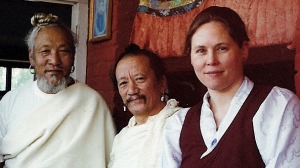
Kunzang Dorje, Lama Dawa, and Khandrola
In the fall of 1999 she met the great Nyingmapa Tsa-Lung and Dzogchen master, Kunzang Dorje Rinpoche and recognized her
as an emination of the dakini Mingyur Paldron. He conferred upon her the tantric precepts and gave her the name Kunzang
Dechen Chodron, and following her Guru’s instruction, became the consort and companion to Acharya Dawa Chhodak Rinpoche.
Between 1999 and 2009, Khandro Kunzang received the entire cycle of teachings and empowerments of the Rigdzin Sogdrub
lineage from Kunzang Dorje Rinpoche, and completed many retreats under his direct supervision. In 2007 he bestowed on
her the sacred Tummo’s Mewang (fire empowerment) after completing the Tsa-Lung and Tummo’s Rekyang course, where he gave
her full authority to hold the Rigdzin Sogdrub lineage and teach it to others.
Kunzang completed the generation and completion stage practice retreats of the Three Roots of the Dudjom Tersar
She also completed the outer, inner, and sacred levels of the Khandro T’hug-t’hig Tsa Lung under the instruction of Lama
Pema Dorje Rinpoche. She currently studies and practices under His Holiness, Shenphen Dawa Rinpoche, and holds the Namchak
Putri Vajrakilaya as her main practice. In 2011, Acharya Dawa Chhodak Rinpoche bestowed the Tri-Don – enthronement ceremony
– conferring authority to guide and teach others, and giving her the title of Khandro.
WUTAI-EMEI MOUNTAIN ITINERARY
May 13 - Arrive in Beijing check into traditional courtyard hotel.
May 14 - Morning visit to Beihai Park, make offerings to Yamantaka at the Temple of Eternal Peace Kalachakra Stupa for
our journey to Wutai Mountain. Visit Yong He Gong Monastery, and then the 6 hour road trip to Wutai Mountain.
May 15 - Pilgrimage to the Dayuan Temple and the Shakyamuni Stupa that houses the relics of the Buddha Shakyamuni. Climb
to the Bodhisattva Peak and visit all of the temples along the way. This is where the famous Mahasiddha Jigme Puntsog Rinpoche
gave many extensive teachings on Manjushri, and commissioned a Guru Rinpoche chapel at the peak.
May 16 - Hike to the Avalokitishvara cave where the sixth Dalai Lama spent six years in retreat. Above a beautiful
Gelug temple is a Tibetan medicine clinic and the Avolikitshvara Cave. There is also a pool of nectar pilgrims come to
drink to heal their illness, and empower their meditation. Then we'll hike to the Samantabhadra cave. Then on
to the Manjushri Cave where Manjushri first came to Wutai Mountain and pushed all of the local malovent spirits of six realm
into the ground, and from the ground sprouted forth a forest of trees that contained the transformed local spirits called
the six vein trees. Wutai Mountain is the only place in the world that has these trees and the locals make malas from them
and they contain the transformative powers of Manjushri.
May 17 - Pilgrimage to the Zhenhai Temple of the 7th Jiangjia Rolpe Dorje Rinpoche, The Pureland White Cloud Temple, built by the
official Daotai under direct orders from Manjushri himself after healing his mother's sickness, and the amazing Mother Buddha
Dakini Tara Cave. After climbing to the mountain peak you enter the temple complex and walk between her legs to her yoni. The yoni
is only around thirty six inches in diameter and you have to prostrate yourself to enter. If you have the fortunate karma to enter
her womb you can see all of her internal organs that are growing in the cave rock. Exiting back through her yoni is an experience of rebirth
into the Pureland.
May 18 - Pilgrimage to the Xiantong Temple, built in 68AD, it is one of the oldest, largest and most revered on Wutai Mountain. With 12
courtyards, and four hundred rooms, it has some specatacular Ming Dynasty bronze pagodas full of Buddhist images.
May 19 - Bus to Taiyuan airport for the flight to Chengdu, Sichuan province. Bus to Emei Mountain, check into the Bao Guo Temple. Leave all heavy
gear at the temple, and take a dharma bag, or small backpack up the mountain.
May 20 - Hike to the Spiritual Water Nunnery, previously a temple of the emperor Kangxi, and Jigme Puntsog.
May 21 - Hike to the Rest Your Mind retreat center. There are sealed retreatants here who are said to have immortalized. This day is also Sagadawa
so we will have a puja here.
May 22 - Hike to the Flower adornment Temple where Samantabhadra first landed on Emei Mountain, when he flew there from India on his
elephant.
May 23 - Hike to the Lightning Thunder Temple.
May 24 - Hike to the Golden Summit, to witness the rising sun over the sea of clouds, graet for Dzogchen Sky meditation,
and maybe witness Samantabhadra's heard of elephants.
May 25 - Descend the mountain, evening soak in the hot springs, and Emei style bodywork.
May 26 - Drive the Manjushri Gardens in Chengdu and stay at the Buddha Zen Hotel. This is where Manjushri first turned the wheel of dharma when he
arrived in China. Free afternoon to explore the ancient capital, Manjushri Gardens, and Tibet Town.
May 27 - Fly to Beijing-USA.
|
|
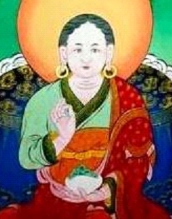 |
| Mingyur Paldron |
 |
| Khandro Kunzang |
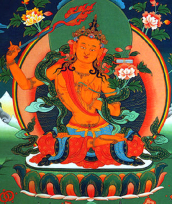 |
| Wisdom Buddha Manjushri |
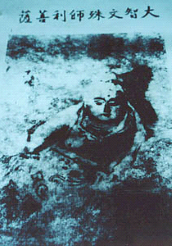 |
| Photo of Manjushri in the clouds. |
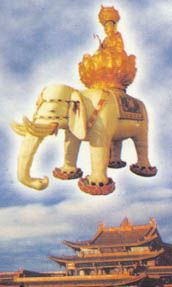 |
| The Bodhisattva Samanthabadra came to Emei Mountain two thousand years ago. |
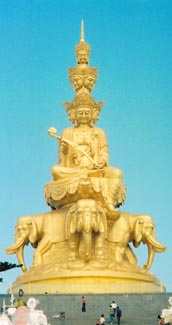 |
| This 20 story tall Samantabhadra statue made of gold is the world's tallest. |
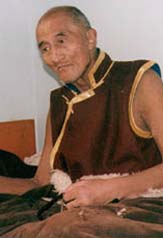 |
| This Kanding Lama, spent over 70 years in cave retreat. |
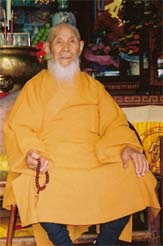 |
| Tongyong, former head Abbot of Emei Mountain, just passed into nirvana at 108 years old. |
|
| Jigme Puntsok doing a Manjushri Empowerment |
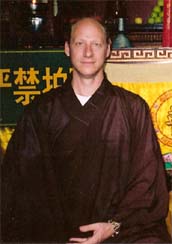 |
| Linhai, has guided on Emei Mountain since 1987. |
|
|